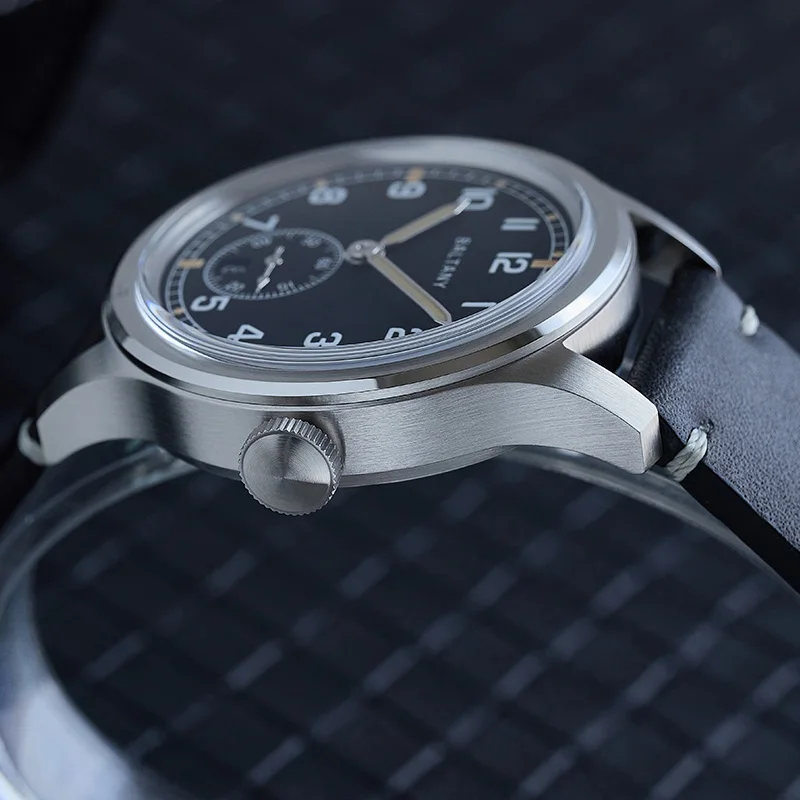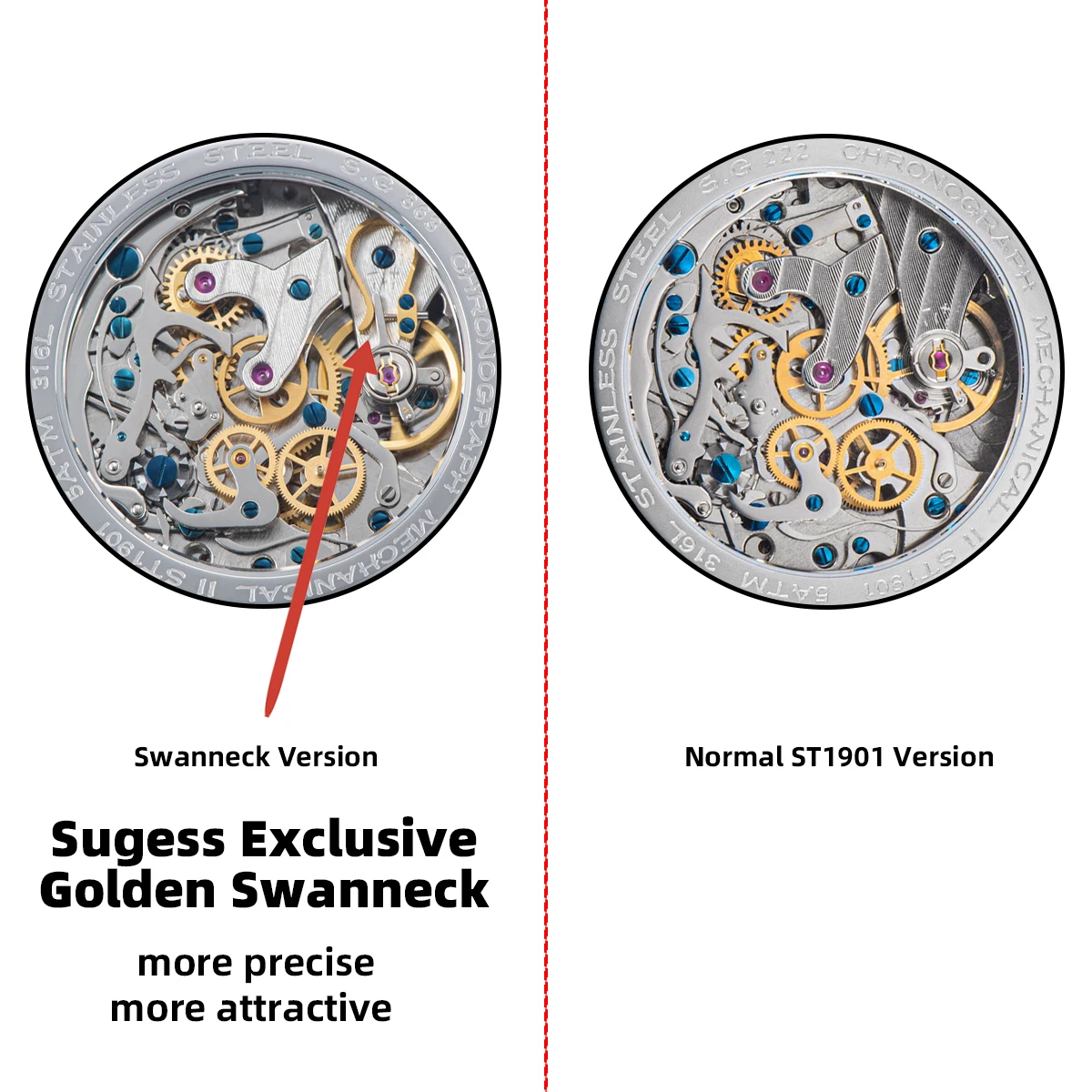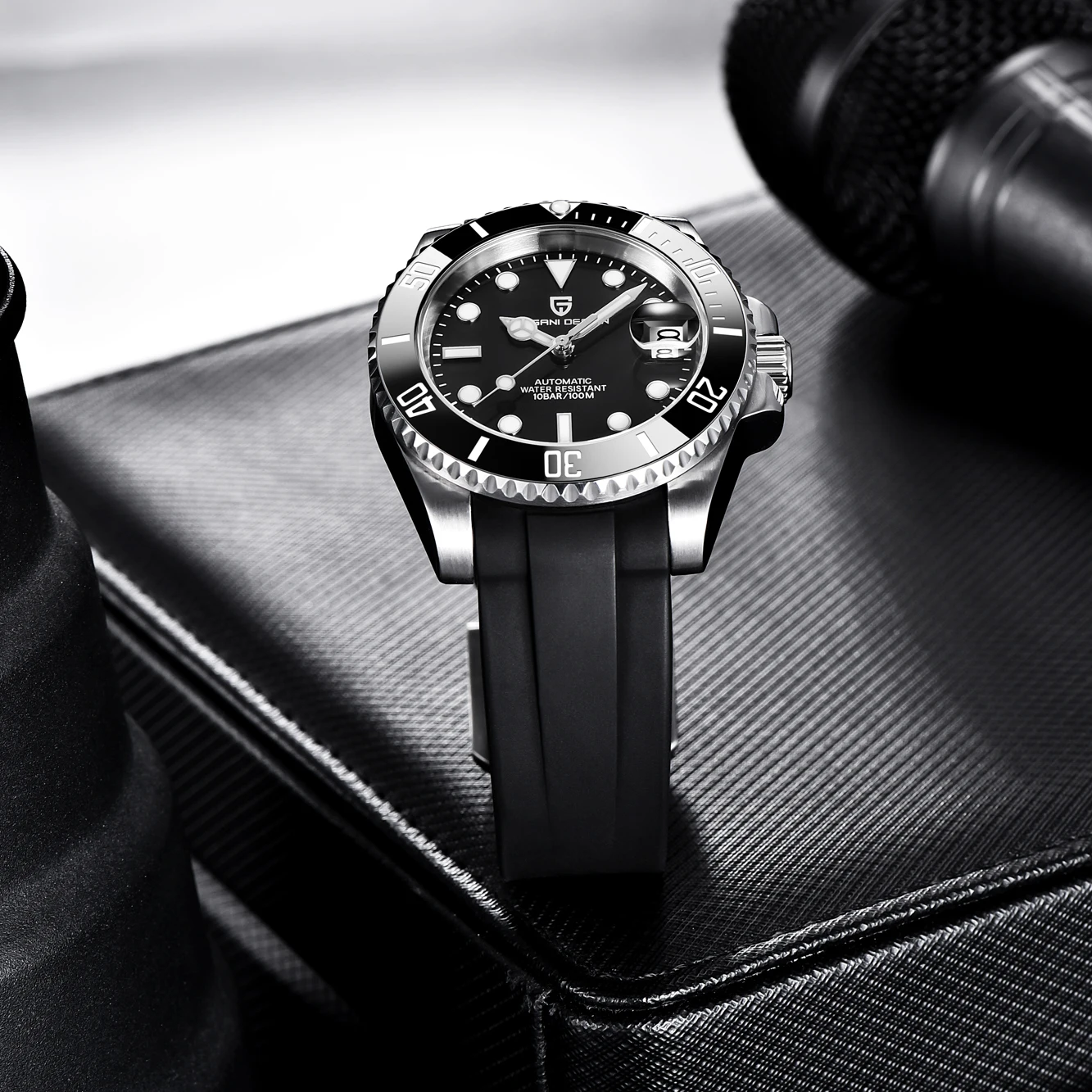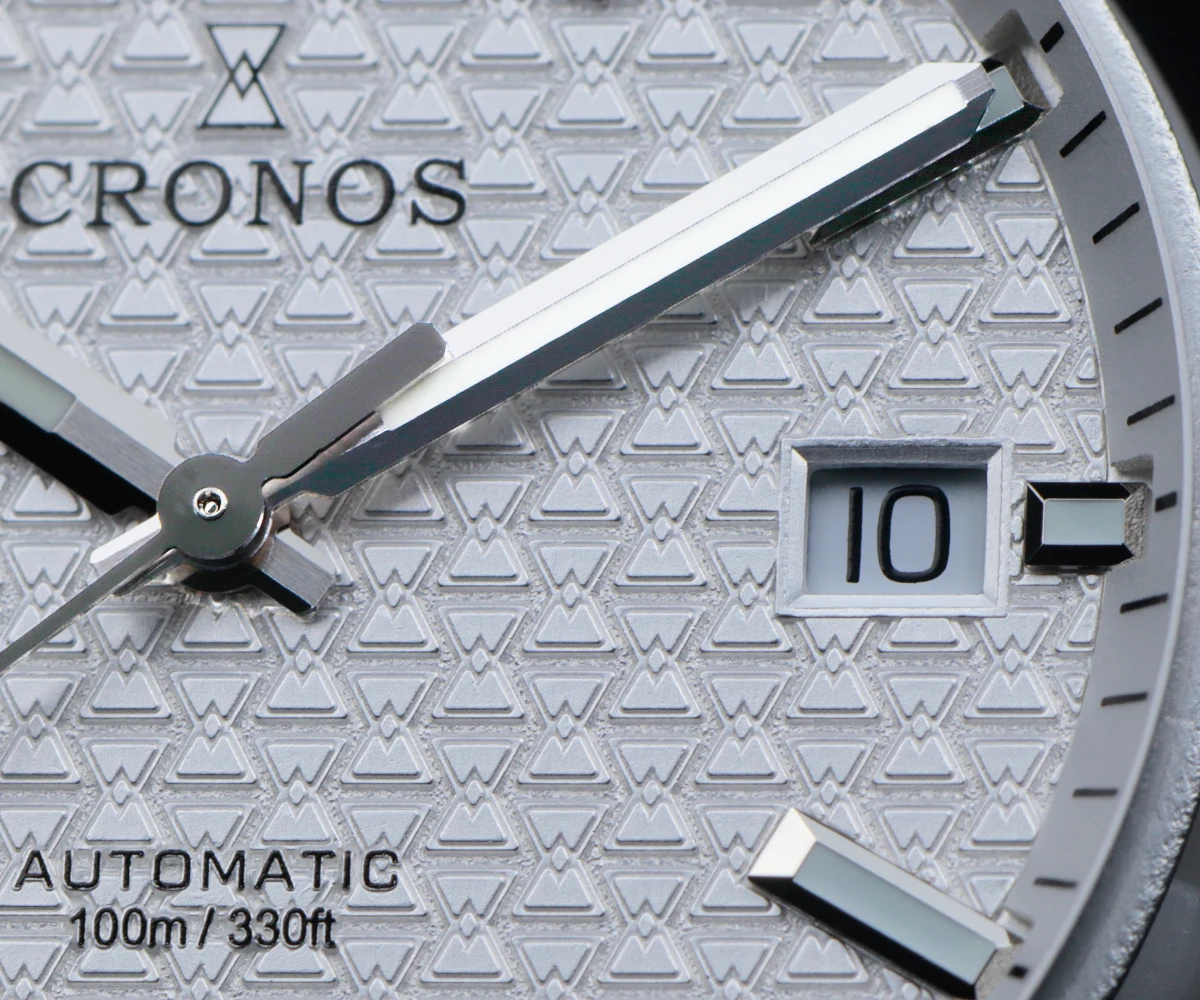The Dawn of Flight: Early Aviators and Their Revolutionary Timepieces
When the first brave pilots took to the skies in the early 1900s, they faced challenges unlike any encountered on land or sea. Aviation created unique demands for navigation in three-dimensional space, where pilots needed to simultaneously track their position, heading, altitude, and remaining fuel. In this primitive era of flight, cockpits lacked sophisticated instruments, making reliable timekeeping absolutely critical for survival.
The traditional pocket watch quickly proved impractical in these conditions. Imagine attempting to retrieve a pocket watch while simultaneously managing manual flight controls in an open, vibrating cockpit, often in freezing temperatures and while wearing heavy gloves. The need for a more accessible timepiece became glaringly apparent.
Early aviation presented a perfect storm of challenges for timekeeping: extreme temperature fluctuations, constant vibration, magnetic interference from engines, and the need for split-second timing during critical maneuvers. These conditions demanded timepieces far more robust and accessible than anything previously developed.
The comprehensive history of aviation timepieces reveals how watches evolved from mere convenience to essential tools that could mean the difference between a successful flight and disaster. As pilot watches developed, they would incorporate features specifically addressing the unique requirements of flight, setting them apart from timepieces designed for land or sea use.
The First Airborne Timepiece: The Cartier Santos-Dumont (1904)
The birth of the pilot’s watch came through a friendship between two pioneers in their respective fields. Brazilian aviator Alberto Santos-Dumont, famous for his early dirigible and aircraft designs, complained to his friend Louis Cartier about the impracticality of using pocket watches during flight. In response, Cartier created what is widely considered the first purpose-built wristwatch for pilots.
The Santos-Dumont watch introduced several revolutionary design elements:
- Square case design for improved legibility
- Secure wrist-mounted design freeing both hands for flight controls
- Highly visible Roman numerals for quick time reading
- Reinforced crystal to withstand cockpit vibrations
- Leather strap designed for wear over flight gear
This timepiece marked a significant departure from convention. While wristwatches existed previously, they were primarily dainty jewelry pieces worn by women. The Santos-Dumont legitimized the wristwatch as a practical tool for men, particularly those in demanding professions.
The innovative design established a foundation upon which future aviation timepieces would build, demonstrating how square and rectangular automatic watches could provide both style and functionality. Its impact extended far beyond aviation, helping transform the wristwatch from novelty to necessity.
Crossing the Channel: Louis Blériot and His Zenith (1909)
When Louis Blériot prepared to attempt the first airplane crossing of the English Channel in 1909, he chose a Zenith wristwatch as his companion for the perilous journey. This historic 37-minute flight between France and England demonstrated not only the potential of aviation but also the crucial role of reliable timepieces in pushing its boundaries.
The Channel crossing presented multiple timing challenges: monitoring fuel consumption, tracking flight duration, and coordinating arrival with support crew. Blériot’s Zenith proved equal to these demands despite exposure to the elements in his open cockpit monoplane.
After successfully landing on English soil, Blériot reportedly praised his timepiece, stating that he was “extremely satisfied with the Zenith watch, which I usually use and which I had during my cross-Channel flight.” This endorsement from one of aviation’s greatest pioneers provided powerful validation for wristwatches in professional settings.
The publicity surrounding Blériot’s achievement and his choice of timekeeper accelerated two significant shifts: the adoption of aircraft for previously impossible journeys and the transition from pocket watches to wristwatches for men engaged in active pursuits. What began as a practical solution for pilots would soon become essential equipment for an entire generation of military aviators.
From Novelty to Necessity: World War I Military Aviation Timepieces
The outbreak of World War I transformed aviation from an experimental pursuit to a critical military capability. Aircraft evolved from observation platforms to combat vehicles, and with this evolution came standardized requirements for pilot equipment—including watches.
Military aviation created unprecedented demands for timepieces:
– Synchronization of squadron movements and attacks
– Timing of reconnaissance missions over enemy territory
– Navigation when flying between outposts and bases
– Fuel management with limited onboard instrumentation
Watch manufacturers responded by converting civilian models to military specifications. Key adaptations included:
– Larger crowns operable while wearing flight gloves
– Luminous dials and hands for nighttime operations
– Reinforced cases to withstand combat conditions
– Oversized numerals for instant readability in turbulent conditions
These military-issue watches established design conventions that continue to influence military-inspired automatic watches today. The sheer scale of wartime production accelerated innovation and standardization, transforming watches from custom-made luxuries to precision tools produced to rigorous specifications.
By the war’s end, the wristwatch had firmly established itself as standard equipment for pilots, with numerous manufacturers gaining valuable experience in producing timepieces for aviation use. This foundation would prove crucial as aviation advanced into its golden age.
The Golden Age: Interwar Period Navigation Innovations
The period between World Wars saw remarkable advancements in aviation, with record-setting long-distance flights capturing the public imagination. These ambitious journeys—crossing continents, oceans, and eventually circumnavigating the globe—created new challenges for navigation and timing.
Celestial navigation became increasingly important for transoceanic flights, requiring precise time synchronization with Greenwich Mean Time. Pilots and navigators needed to perform complex calculations while in flight, often while managing aircraft controls and communication equipment simultaneously.
Several key developments marked this era:
Radio Time Signals
The establishment of regular radio time signals allowed pilots to synchronize watches with remarkable accuracy, essential for celestial navigation.
Specialized Logarithmic Scales
Watch bezels and dials began incorporating scales for fuel consumption, airspeed conversion, and distance calculations.
Aviation-Specific Complications
Chronograph functions, decimal minute divisions, and prominent second hands emerged to support timing of flight legs and navigation fixes.
Many of these innovations came directly from pilots themselves, who worked with watchmakers to create timepieces addressing specific aviation challenges. These collaborations resulted in watches that not only kept time but served as genuine navigational instruments, fundamentally linked to aviation milestones and iconic watch designs.
Captain Philip Van Horn Weems and Longines: The Science of Navigational Timekeeping
Naval officer and navigation instructor Philip Van Horn Weems revolutionized aviation navigation by developing a comprehensive system that relied heavily on precise timekeeping. Recognizing the critical need for accurate time synchronization in flight, Weems collaborated with Longines to create the Second-Setting Watch in 1929.
The Weems watch featured an ingenious innovation: a rotating central seconds dial that could be synchronized precisely with radio time signals without stopping the watch mechanism. This allowed pilots to correct for any timing discrepancies while maintaining continuous timekeeping—essential for accurate celestial navigation.

Key features of the Weems Second-Setting Watch included:
– Rotatable inner bezel calibrated for seconds
– Oversized crown for adjustment while wearing gloves
– Extra-large case (approximately 47mm) for excellent legibility
– Highly visible numerals and hands with luminous coating
– Robust construction for reliability in flight conditions
The Weems watch represented a significant step toward scientific precision in aviation timepieces, bridging maritime navigation techniques with aviation requirements. Its influence can still be seen in many contemporary classic field watches, which maintain similar emphasis on legibility and precision.
Charles Lindbergh and the Longines Hour Angle Watch (1931): Navigating the Atlantic
Following his historic solo transatlantic flight in 1927, Charles Lindbergh recognized the need for an even more specialized navigational watch. Drawing on his firsthand experience and working with Longines and Captain Weems, Lindbergh designed the Hour Angle Watch—perhaps the most sophisticated navigational timepiece of its era.
The Hour Angle Watch solved a fundamental challenge in transoceanic flight: determining longitude by converting time into angular distance. Its specialized dial allowed pilots to calculate their precise position using celestial observations without requiring complex mathematical calculations mid-flight.
This remarkable instrument featured:
– Rotating outer bezel calibrated to convert time to longitude (15° per hour)
– Inner rotating dial for synchronization with radio time signals
– Special markings dividing the hour into degrees, minutes, and seconds of arc
– Oversized case (47-48mm) with prominent crown for use with gloves
– Distinct dial arrangement optimized for navigational calculations rather than basic timekeeping
The Hour Angle Watch represented the pinnacle of analog computing in wristwatch form, demonstrating how cockpit experience shaped wristwatch design. While modern aviation would eventually adopt electronic navigation systems, Lindbergh’s watch serves as a testament to the ingenuity of early aviators in developing tools to conquer the challenges of long-distance flight.
World War II: Pilot Watches Become Critical War Instruments
The outbreak of World War II brought unprecedented aerial warfare, with tens of thousands of aircraft operating across multiple theaters. Aviation timepieces became standardized military equipment, produced in massive quantities to exacting specifications. These watches weren’t mere accessories—they were mission-critical instruments upon which lives depended.
Wartime pilot watches had to withstand extreme conditions:
– High-altitude operations at subzero temperatures
– Intense vibration from aircraft engines
– Magnetic interference from radar and radio equipment
– Sudden pressure changes during rapid ascent and descent
The strategic importance of precision bombing and formation flying placed even greater emphasis on synchronized timing. Navigators in bomber aircraft relied on their watches for dead reckoning navigation, timing turns on bomb runs, and calculating fuel reserves for return journeys.
Both Axis and Allied forces developed distinctive approaches to aviation timepieces, reflecting their different manufacturing capabilities and military doctrines. These wartime watches would establish design conventions that continue to influence aviation timepieces decades after the conflict ended.
German “Beobachtungsuhren” (B-Uhr): The Definitive Military Navigator’s Watch
The German Luftwaffe developed perhaps the most distinctive and influential military aviation watch of World War II: the Beobachtungsuhr (observation watch), commonly known as the B-Uhr. These oversized precision instruments were issued to navigators and maintained as aircraft equipment rather than personal items.
Five manufacturers were commissioned to produce B-Uhren to identical specifications:
– A. Lange & Söhne
– Laco
– Stowa
– Wempe
– International Watch Company (IWC)
The B-Uhr featured several distinctive design elements:
– Massive 55mm case diameter for maximum legibility
– Extra-long leather strap for wear over flight jackets
– Oversized onion-shaped crown operable with gloves
– Highly accurate mechanical movement with central seconds hand
– Anti-magnetic shielding to protect from aircraft instruments
– Hacking feature (seconds stop) for precise synchronization
Two dial variants were produced:
– Type A: Large Arabic numerals from 1-11 with triangle marker at 12
– Type B: Outer ring with minutes 5-55, inner ring with hours 1-12
The B-Uhr’s design has proven remarkably enduring, influencing countless automatic watches designed for military service and performance to this day. Its utilitarian aesthetic and functional elements established a design language for pilot watches that remains instantly recognizable.
Allied Timepieces: American A-11 and British “Dirty Dozen”
While German forces relied on the massive B-Uhr, Allied powers took a different approach to aviation timepieces, emphasizing mass production and standardization.
The American A-11 specification created what many have called “the watch that won the war.” These watches featured:
– 30-36mm case diameter (substantially smaller than German equivalents)
– High-contrast black dial with white Arabic numerals
– Central seconds hand for precise timing
– Hacking mechanism for synchronization
– Accurate to within 30 seconds per day
– Manufactured in large quantities by Elgin, Waltham, and Bulova
Meanwhile, British forces commissioned twelve Swiss manufacturers to produce the W.W.W. (Watch, Wrist, Waterproof) for military use, creating what collectors now call the “Dirty Dozen.” These watches featured:
– Black dials with luminous hands and hour markers
– Subseconds dial at 6 o’clock
– Broad arrow marking indicating government property
– Robust cases with fixed spring bars
– Waterproof construction
The Allied approach emphasized practical function and ease of production rather than specialized navigation features. These watches were designed to be reliable timekeepers in combat conditions, with sufficient accuracy for coordination of military operations without the specialized scales found in German navigation watches.
Aviation Chronographs: Precise Timing for Critical Maneuvers
For specialized timing needs, both Axis and Allied aviators relied on chronograph watches—timepieces with stopwatch functionality integrated into the watch mechanism. These sophisticated instruments allowed pilots to time flight legs, coordinate rendezvous points, calculate fuel consumption, and time attack runs with precision.

German pilots often used chronographs from Hanhart and Tutima, featuring:
– Single-pusher or two-pusher operation
– Flyback functionality for instant timing reset
– Large fluted bezels operable with gloves
– Asymmetric case design to protect pushers
Allied forces favored chronographs from manufacturers like Breitling, Lemania, and Universal Genève, which offered:
– Two-register or three-register layouts tracking elapsed minutes and hours
– High-contrast dials with telemeter or tachymeter scales
– Waterproof cases with screw-down casebacks
– Reliable column-wheel or cam-actuated movements
These specialized chronograph pilot watches performed calculations that would otherwise require separate instruments or complex mental math—a luxury pilots couldn’t afford while simultaneously flying aircraft and potentially evading enemy fire.
The Jet Age Revolution: Watches for Supersonic Flight
The post-war introduction of jet aircraft created new challenges for aviation timepieces. Jets traveled at unprecedented speeds across multiple time zones, operated at extreme altitudes, and generated stronger vibrations and magnetic fields than their piston-engine predecessors.
Several key developments emerged to address these challenges:
– Anti-magnetic shielding became increasingly important as cockpit electronics proliferated
– Multi-time zone functions grew essential for international flight operations
– Enhanced shock protection was required for supersonic flight conditions
– Rotating bezel calculators enabled quick computations of fuel consumption and other critical metrics
The expansion of commercial aviation also influenced watch design, as airlines needed pilots equipped with timepieces suitable for long-haul international flights. Watches became less about celestial navigation (increasingly replaced by electronic navigation aids) and more about operational timing, flight planning, and managing multiple time zones.
The history of aviation timekeeping tools shows this transition from pure navigation instruments to operational tools designed for the complexities of jet-age aviation, where speed compressed time and distance in ways early aviators could hardly imagine.
Breitling Navitimer (1952): The Flying Computer
When Breitling introduced the Navitimer in 1952, it created what many consider the ultimate analog aviation computer. Developed in collaboration with the Aircraft Owners and Pilots Association (AOPA), the Navitimer combined a chronograph with a circular slide rule capable of performing virtually all calculations required for flight planning and navigation.
The Navitimer’s slide rule bezel allowed pilots to:
– Convert between miles, kilometers, and nautical miles
– Calculate fuel consumption rates
– Determine climb and descent rates
– Compute average speed
– Convert between different measurement systems
Beyond these practical functions, the Navitimer featured:
– A three-register chronograph tracking seconds, minutes, and hours
– High-contrast reverse panda dial for excellent legibility
– Distinctive notched bezel for easy grip with gloves
– AOPA wings logo signifying its official endorsement
While electronic calculators and flight computers would eventually replace these functions, the Navitimer demonstrated remarkable ingenuity in packing so much computational capability into a wristwatch. Modern aviation chronographs continue to draw inspiration from its iconic design, even as their slide rule bezels serve more as homage than practical necessity for today’s pilots.
Rolex GMT-Master (1954): Conquering Time Zones
As international air travel expanded in the 1950s, pilots faced a new challenge: simultaneously tracking multiple time zones while crossing continents and oceans. Responding to Pan American World Airways’ request for a solution, Rolex developed the GMT-Master—a watch that elegantly addressed this specific operational need.
The GMT-Master introduced a fourth hand (completing one rotation every 24 hours) working in conjunction with a bidirectional rotating bezel marked with 24-hour graduations. This allowed pilots to track their home time zone while adjusting the main hands to local time at their destination.
Key features of the original GMT-Master included:
– Red and blue “Pepsi” bezel dividing day (red) from night (blue) hours
– 24-hour hand with distinctive arrowhead tip
– Date function at 3 o’clock position
– Highly legible dial with luminous markers
– Robust Oyster case providing excellent durability
The GMT function proved so useful that it became a standard feature for GMT pilot watches across numerous brands. The elegant simplicity of the GMT-Master’s approach to multi-timezone tracking made it not just a pilot’s tool but a perfect watch for international travelers of all kinds.
Essential Features: The Anatomy of a Pilot’s Watch
Through decades of aviation history, certain definitive features have emerged that characterize purpose-built pilot watches. These design elements combine form and function, each serving specific purposes in the cockpit environment:
Legibility Features
– High-contrast dials (typically black with white markings)
– Large, luminous hands and hour markers
– Uncluttered dial design emphasizing essential information
– Anti-reflective crystal treatment
Durability Elements
– Robust case construction withstanding vibration and impacts
– Shock-resistant movement mounting
– Anti-magnetic shielding protecting from instrument interference
– Secured crystal preventing displacement during pressure changes
Operation Features
– Oversized crown for manipulation while wearing gloves
– Prominent pushers for chronograph functions
– Bidirectional bezel with positive click mechanism
– Hacking seconds for precise synchronization
Specialized Complications
– Chronograph functions for interval timing
– GMT complications for multiple time zone tracking
– Slide rule bezels for in-flight calculations
– Date displays for flight planning reference
Strap Designs
– Extra-long straps accommodating wear over flight suits
– Secure fastening preventing accidental loss
– Quick-release mechanisms for emergency situations
– Materials withstanding sweat and environmental extremes
These features evolved directly from practical aviation requirements behind pilot watch features, creating a distinctive aesthetic that balances form and function. While modern aviation relies heavily on electronic instrumentation, these design elements remain deeply connected to the challenges pilots have faced throughout aviation history.
Legendary Aviators and Their Trusted Timepieces
Behind every significant aviation achievement stands not only a pilot and aircraft but often a reliable timepiece that helped make history possible. These personal connections between aviators and their watches tell compelling stories of trust in critical moments.
Alberto Santos-Dumont’s Cartier represented more than just a timekeeping device; it symbolized friendship and innovation, with one pioneer helping another overcome a practical challenge. The watch became as much a part of his public image as his distinctive aviation attire.
Charles Lindbergh’s relationship with his timepieces shows remarkable evolution—from the basic watch he wore during his transatlantic flight to his deep involvement in designing the Hour Angle Watch afterward, applying hard-won experience to create something better for those who would follow his path.

Amelia Earhart reportedly favored a Longines chronograph during her record-setting flights, recognizing the importance of precise timing for navigation and flight records. Her watch served as both a practical tool and a symbol of aviation’s growing accessibility to women.
Chuck Yeager, the first pilot to break the sound barrier, demonstrated how watches remained relevant even as aviation entered the supersonic era. The extreme conditions of his historic flight put unprecedented demands on all equipment, including his timepiece.
These personal connections highlight how pilot watches were more than mere instruments—they were trusted partners in achievement, often worn long after specific flights as reminders of challenges overcome.
The Enduring Legacy: Why Historical Pilot Watches Still Captivate
Historical pilot watches hold enduring appeal that transcends their original utilitarian purpose. These timepieces continue to captivate watch enthusiasts and aviation buffs alike for several compelling reasons.
First, they represent function-driven design at its finest. Every element exists for a specific purpose, creating an aesthetic where form follows function in its purest expression. This purposeful design creates a distinctive visual language that remains immediately recognizable and perpetually modern.
Second, these watches embody important moments in human achievement. When we look at a pilot watch, we connect with aviation milestones—the first transatlantic flight, breaking the sound barrier, or circumnavigating the globe. They serve as tangible links to humanity’s conquest of the skies.
Third, the robust engineering required for aviation use created timepieces of exceptional quality and durability. Watches designed to withstand extreme conditions often demonstrate remarkable longevity, with many vintage examples still functioning perfectly after decades of use.
Modern automatic pilot watches continue this tradition, incorporating contemporary materials and manufacturing techniques while honoring the design heritage established by aviation pioneers. This balance of heritage and innovation ensures these distinctive timepieces remain relevant in the digital age.
What Makes a Pilot’s Watch Today? Modern Interpretations of Aviation Heritage
Contemporary pilot watches walk an interesting line between honoring historical traditions and incorporating modern advancements. While cockpit instruments have largely replaced watches for critical navigation tasks, manufacturers continue producing aviation-inspired timepieces that balance heritage with innovation.
Modern materials have enhanced traditional designs, with ceramic bezels offering superior scratch resistance, titanium cases reducing weight while maintaining strength, and advanced luminous compounds providing superior legibility in low-light conditions. These improvements preserve the spirit of historical designs while addressing their limitations.
Some features have evolved from practical necessities to stylistic hallmarks. The oversized onion crown, once essential for operation with gloves, now serves as a distinctive design element. Similarly, slide rule bezels remain popular despite most calculations now being performed by electronic instruments.
Yet modern pilot watches still serve practical purposes. Anti-magnetic protection has become increasingly valuable in our electronic world. Chronograph functions remain useful for timing events. GMT complications continue to help travelers manage multiple time zones. The robust construction pioneered for aviation use translates to excellent everyday durability.
This evolution demonstrates how purpose-built instruments can transcend their original context to become enduring design classics that balance heritage, functionality, and style.
Can a Modern Watch Match the Historical Significance of Early Pilot Timepieces?
Can today’s aviation watches achieve the same importance as their historical predecessors? This question invites thoughtful consideration from several perspectives.
From a purely functional standpoint, modern cockpit technology has undoubtedly diminished the critical role watches once played in aviation. GPS systems, onboard computers, and digital instrumentation provide precision and reliability that mechanical timepieces cannot match. The life-or-death dependency pilots once had on their watches has largely disappeared.
However, many professional pilots still value specialized timepieces as backup instruments and practical tools. Mechanical watches operate independently of aircraft electrical systems, providing redundancy in emergency situations. Features like chronographs and GMT functions remain genuinely useful in flight operations.
Perhaps most significantly, modern pilot watches maintain an important symbolic connection to aviation heritage. They represent a link to pioneering aviators who risked everything to advance flight. When a contemporary pilot wears a watch inspired by historical designs, they participate in a tradition spanning over a century of human achievement.
The greatest significance of today’s pilot watches may lie in this connection—not merely as tools, but as tangible reminders of aviation’s remarkable journey from fragile wood-and-fabric aircraft to supersonic jets and space exploration. They embody both where aviation has been and the spirit of innovation that continues pushing its boundaries forward.

